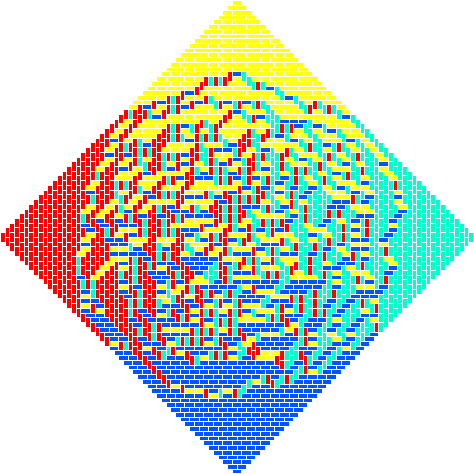
Suppose we have an nxn square region. We can then cover it with 1x2 dominoes without overlap, i.e., tile it with dominoes. There will be many different possible tilings. We can randomly select a tiling from the set of all possible tilings, and ask questions about its behavior. Below is a randomly-tiled square, with differently oriented tiles colored differently.

This looks pretty much like what we expect, but what if we take a slightly differently shaped region? In particular, we can take the Aztec diamond, which is the set of those lattice squares completely inside a square tilted 45 degrees.
Click here for a more rigorous definition of the Aztec diamond. If we take a random tiling from the set of all tilings of the Aztec diamond, we get the following:

We now see an extraordinary effect: the dominoes all go in the same direction at each of the corners! This is known as the Artic Circle phenomenon, because one can prove that for a large Aztec diamond, the polar regions (where the dominoes are "frozen" into a brickwork pattern) are almost always just the regions outside the inscribed circle.